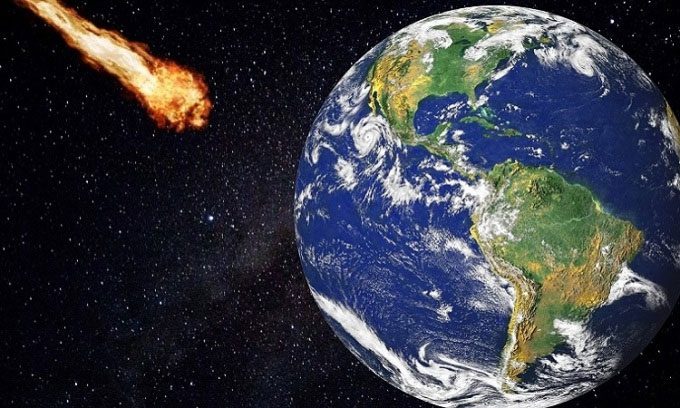NASA is closely monitoring a giant asteroid that will fly near Earth at the end of May at a speed of 25,750 km/h.
The large celestial body heading towards our planet is named 2023 CL3, estimated to be about 200 meters wide. NASA classifies this asteroid as part of the “Near-Earth Object” group. This group includes cosmic rock formations that require further study.

Simulation of the asteroid flying past Earth. (Image: HT Times).
2023 CL3 is more than twice the size of the Statue of Liberty (which stands about 93 meters tall including its pedestal and 46 meters for the statue alone). An asteroid of this size could cause severe damage if it were to collide with Earth. This is why asteroids that come within 7.5 million kilometers of our planet and are larger than 140 meters are typically assessed as “potentially hazardous” by space agencies.
It is expected that asteroid 2023 will fly past Earth on May 24 at a distance of only 7.2 million kilometers. This is not a large distance in astronomical terms. Experts predict that the massive asteroid will safely pass Earth at a speed exceeding 25,750 km/h.
Asteroids are small celestial bodies that orbit the Sun. NASA estimates there are 1,113,527 asteroids in the Solar System. They orbit the Sun and are primarily concentrated in the asteroid belt between Mars and Jupiter. However, due to their relatively small size, asteroids are easily affected by gravitational forces and may have orbits that intersect with the orbits of planets, according to Jay Tate, director of the Spaceguard Observatory in the UK. Most asteroids range in size from 10 meters to 529 kilometers.
Scientists are rapidly developing methods to protect Earth from hazardous asteroids. Previously, a team of NASA scientists announced four studies confirming that the Double Asteroid Redirection Test (DART) successfully altered the trajectory of a small asteroid after a spacecraft directly collided with it. Ongoing follow-up missions aim to improve the effectiveness of this planetary defense technique.


















































